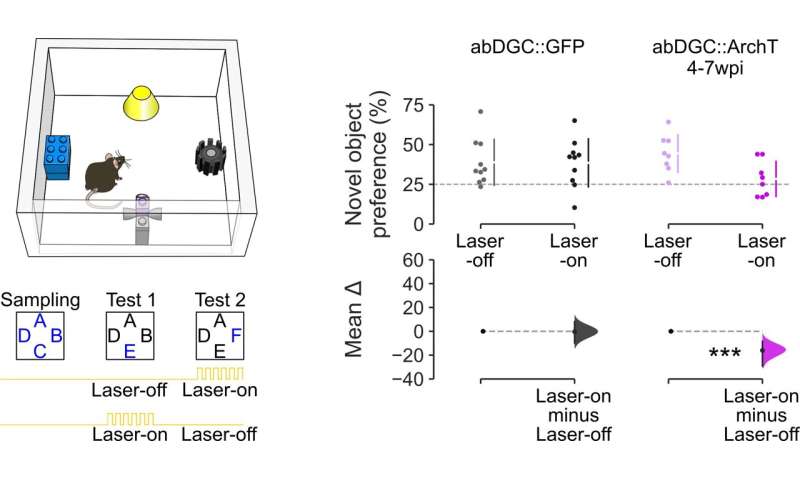The dentate gyrus (DG) is a region of the mammalian brain known to support the encoding of new memories. This brain region is part of the hippocampal formation, a set of brain regions involved in vital memory functions.
Past neuroscience studies showed that throughout a mammal’s lifespan, the DG produces cells that regulate the flow of information into the hippocampus, known as adult-born dentate granule cells (abDGCs). Despite the extensive research investigating the role of these cells, their contribution to downstream firing dynamics (i.e., the neuronal responses that they initiate) remains poorly understood.
Researchers in the MRC Brain Network Dynamics Unit at University of Oxford have recently carried out a study investigating how abDGCs contribute to the function and activity of neurons in the hippocampus, a brain area central to learning and memory. Their findings, published in Nature Neuroscience, suggest that abDGCs modulate the spiking of neuron populations in the hippocampus during the processing of new stimuli and their encoding as memories.
“Despite many previous investigations into the function of adult-born dentate granule cells, their contribution to population activity patterns in behaving animals has remained elusive,” Stephen B. McHugh, one of the researchers who carried out the study, told Medical Xpress. “We wanted to determine what happens to other hippocampal neurons when you activate or silence abDGCs, i.e., to discover how they influence whole-hippocampal network activity.”
McHugh and his colleagues carried out their experiments on adult mice. They targeted the mice’s abDGCs using optogenetics, strategies to control the activity of these neurons using light and genetic engineering techniques. They specifically targeted the cells using light-sensitive proteins, which allowed them to optically tag them and manipulate their activity.

“Simultaneously, we recorded neuronal activity from three hippocampal regions—dentate gyrus, CA3 and CA1—as mice explored familiar and novel environments,” McHugh explained. “We also recorded neuronal activity and behavior during a novel object recognition task to determine if silencing abDGCs affected novelty preference.”



